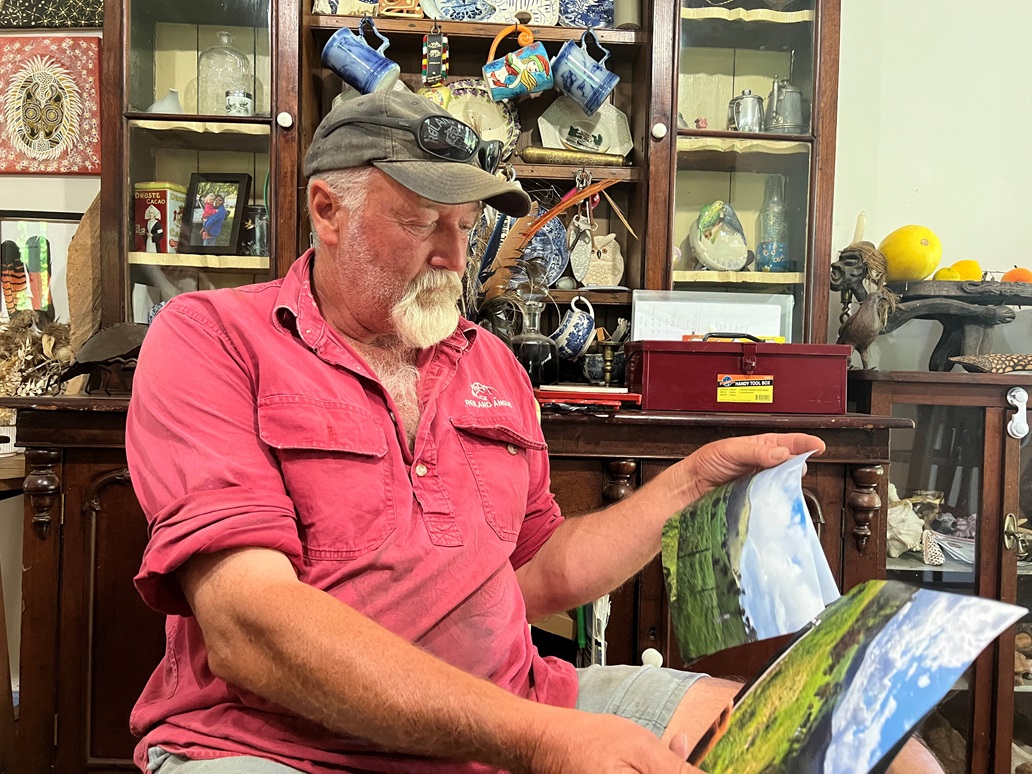
Australia intends to build 10,000km of power lines by 2050 to connect wind, solar and hydro projects to the grid. Without them, fewer renewables can be brought into the power supply, and emissions targets are unlikely to be met.
A faltering energy transition would be a setback for Australia's net zero ambitions at a time when it is seeking to fix its image as a climate laggard and is pitching to host the COP climate conference in 2026.
The protests in Australia are part off a wave of pushback against solar and wind farms and grid expansions in countries like the US and UK that threatens to slow the rollout of cleaner power.
Landowners - despite many of them wanting more renewables - say cables suspended on metal towers up to 80 metres tall will scar their land, inhibit farming and create a fire hazard in areas prone to bushfires, demanding that they be buried underground or, in some cases, abandoned.
Putting more power lines underground would raise their cost and longer construction times could worsen supply shortages, making power more expensive, analysts said, but they added that transmission in some form is essential.
"We're not on track," said David Dixon, an analyst at Rystad Energy in Sydney, adding that coal supplies 60% of Australia's power, and the country needs one of the world's fastest energy transitions to meet its climate goals.
"There's no point moving ahead with solar and wind if there's no transmission capacity to plug them into," Dixon said. "If we can't sort this out, we'll have to extend the life of coal facilities."
The federal and New South Wales state governments said they were increasing investment in renewables and grid infrastructure to meet their climate goals and were stepping up efforts to win over landowners.
The government is "making overdue improvements to the community consultation process for transmission lines and energy infrastructure," said a spokesperson for Australia's climate change and energy minister, Chris Bowen.
HOLD THEM UP
Harry Lucas's farm near Tumut, at the foot of the Snowy Mountains in southeastern Australia, is on the proposed route of HumeLink, a 385-km stretch of 500 kilovolt (kV) power line needed to handle power from Australia's biggest renewables project, the Snowy 2.0 hydro scheme.
Grid companies can obtain compulsory acquisition orders for a 70-metre-wide strip of land to host the line, but Lucas said he could block construction equipment from passing through his farm to reach it.

A little over 55% of the private landowners affected by HumeLink have agreed to the project, said Transgrid, the company building it.
The remainder - around 160 - are opposed to it unless it is buried underground, said Bill Kingwill, who lives near Lucas, adding that he supported renewables and was erecting a wind farm on his property.
Other power line projects face similar opposition.
The government and grid companies say putting a line like HumeLink underground is expensive and technically unfeasible.
Transgrid says it would more than double the cost of HumeLink to $A11.5 billion ($NZ12.3 billion), an estimate landowners and some politicians dispute, and delay its construction.
The company, which aims to complete HumeLink in late 2026, said the line was "urgently required to avoid rolling blackouts and secure the supply of electricity to millions of Australians."
It said it had changed line routes as a result of landowner feedback and would continue to engage with communities to minimise the impact on them.
PROLONGING COAL
While the Australian government says emissions are set to fall by 42% by 2030, in September a government-commissioned report found that significantly less renewable energy was entering the grid than needed to reach the 43% target.
The share of renewables in Australia's power supply is on track to rise to 60% in 2030, up from around 38% now but below the government's 82% goal, said Oliver Nunn at Endgame, a specialist consultancy, adding that lack of transmission was a key impediment.
Emissions of carbon dioxide-equivalent from power generation will be 12 million to 30 million metric tons higher in 2030 than targeted, he said.
And if coal plants close, a shortfall of energy means consumer bills will rise - a cost that could add up to tens of billions of dollars across the economy over the next few years, he added.
The New South Wales state government said in September it was considering keeping the country's largest coal power plant open beyond its planned closing date of 2025 to ensure energy supply. Its planning and environment department declined to comment further on the plant but said it was committed to its climate goals.
BUSHFIRE FEARS
The New South Wales government has offered landowners $A200,000 per kilometre of power line on top of other compensation, which it says will cost $A786 million. Other states have offered similar payments.

Pointing across the valley to the place where a huge bushfire erupted four years ago, she said overhead lines can spark fires and hinder firefighting, given that it is unsafe to be near active lines during a blaze.
Transgrid and other grid companies said they take fire safety very seriously and overhead transmission presents a very low risk.
But Tobin said they would inflict greater danger on the community and the cables must go underground.
"We have to succeed," she said. "Lives depend on it."











